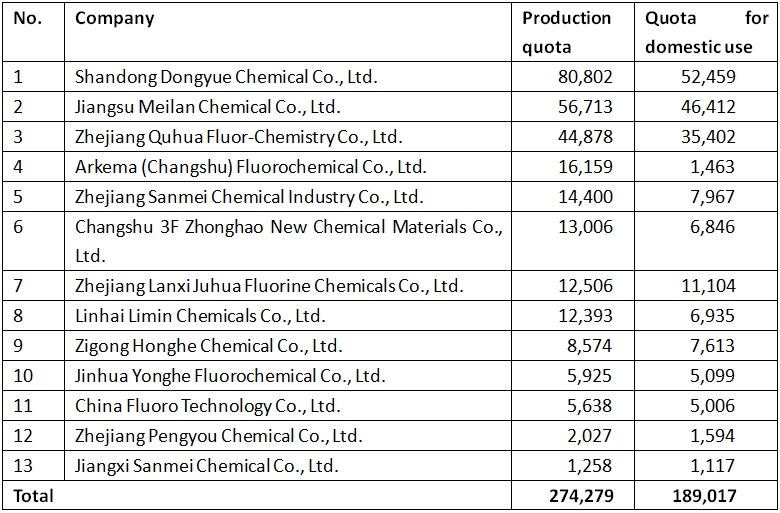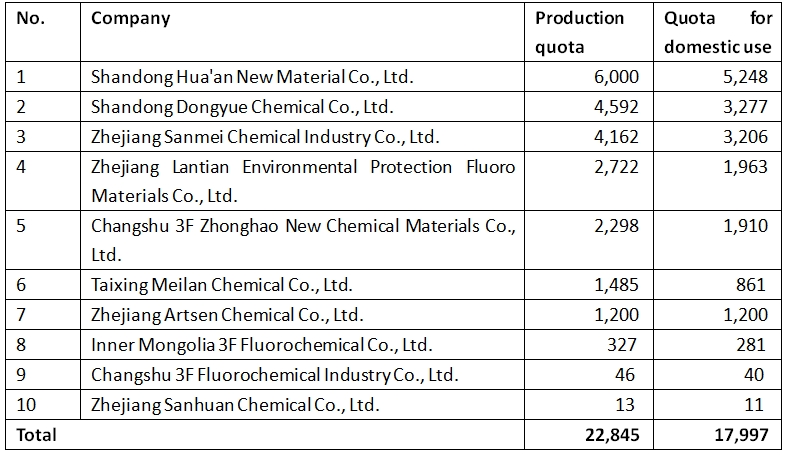The Chinese government is restricting HCFCs’ downstream application in order to upgrade the whole industry through the elimination in HCFCs’ production, according to analysts CCM.

Source: Bing
“The
Chinese government is decreasing the consumption quota of HCFCs in the
industries of refrigeration and air-conditioning, and PU foaming. It indicates
that China is accelerating the elimination in production as to promote its
substitutes HFCs” stated Stanley Wang, Chief Editor of China
Fluoride Materials Monthly Report.
In
the end of Dec., 2015, the Ministry of Environmental Protection of the People’s
Republic of China (MEP) released the production quota of
hydrochlorofluorocarbons (HCFCs) for year 2016.
In
the meanwhile, this year, MEP also released the HCFCs consumption quota, which
is covering in total 34 room air conditioner manufacturers, 18 industrial and
commercial refrigeration and air conditioning enterprises, 11 polyurethane (PU)
foam enterprises, 17 extrusion polystyrene foam enterprises, 1 cleaning
enterprise and 1 pharmaceutical aerosol enterprise.
The
production and consumption quotas involve 5 types of HCFC in particular, namely
difluorochloromethane (HCFC-22), dichlorofluoroethane (HCFC-141b),
chlorodifluoroethane (HCFC- 142b), dichlorotrifluoroethane (HCFC-123) and
chlorotetrafluoroethane (HCFC-124).
Unlike
year 2015, which witnessed a reduction of 10% YoY, the HCFCs production quota
has yet to be further down-regulated this year, as it still presents an overall
value equal to the one of the previous year. The quotas for HCFC-22, HCFC-141b
and HCFC-142b amount to 274,279 tonnes, 66,313 tonnes and 22,845 tonnes
respectively.
Year
2016 is however going to be the beginning of China’s 2nd phase of HCFCs
elimination. During 2016 and 2020, the Chinese government plans to eliminate
35% respectively of the HCFCs’ production and consumption volumes of 2009-2010.
“Consequently,
the equality of the production quota will be optimistically only temporary”
said Stanley.
As for the consumption quota, except for an
up-regulation in the extrusion polystyrene foam industry, the other industries
are showing downward trends. Both industries are clearly displaying relatively
large decreases.
In
the industry of refrigeration and air-conditioning, the consumption of HCFC-22
has been reduced by 8.83% YoY to 67,059 tons, while in the industry of PU
foaming, the consumption of HCFC-141b has been reduced by 27.25% YoY to 2,665
tonnes.
Production quota of HCFC-22 in China, 2016, tonne

Note: The quota for domestic use is part of production quota, indicating that its corresponding products are for domestic sale in China.
Production quota of HCFC-141b in China, 2016, tonne

Source: Ministry of Environmental Protection of the People’s Republic of China & CCM
Production quota of HCFC-142b in China, 2016, tonne

Source: Ministry of Environmental Protection of the People’s Republic of China & CCM
Production quota of HCFC-123 & HCFC-124 in China, 2016, tonne

Source: Ministry of Environmental Protection of the People’s Republic of China & CCM
Now
that many substitutes such as hydrofluorocarbons (HFCs) have been improved for
environmental protection and are finally mature both in technology and for
commercial use.
“It’s
not difficult for downstream enterprises to apply them. They are also now
capable to level up several performance indices for end products” said Stanley.
For
instance, HFC-410a (a 1:1 mixture of difiuoromethane – HFC-32 and
pentafluoroethane – HFC-125), a substitute for HCFC-22 in the field of
household air conditioner, is now widely applied.
At
the same time, air conditioners that use HFC-410a are mostly of variable
frequency, which, compared to conventional HCFC-22 fixed frequency air
conditioners, are more manageable in terms of energy-saving and temperature
control. Thanks to this, the sales of HFC-410a air conditioners are now rising
over 50% in the terminal consumption market.
MEP
is recently promoting the application of some emerging substitution
technologies, such as propane (R290) air conditioners. The main cause of this
decision is the very low global warming potential (GWP) of R290, which is able
to replace high-GWPed HFCs despite having zero ozone depletion potential (ODP).
This is expected to be a significant step forward for the
environmental-friendly application of refrigerants.
While
favourable policies are advanced, the domestic enterprises, such as Gree
Electric Appliances, Inc. of Zhuhai, Midea Group Co., Ltd., Haier Electronics
Group Co., Ltd., TCL Corporation, China Yangzi Group Chuzhou Yangzi Air
Conditioner Co., Ltd. and Sichuan Changhong Air Conditioner Co., Ltd., have
officially launched R290 air conditioners onto the market.
In
addition, it is specified in the First Catalogue of Recommended Substitutes for
HCFCs (Exposure draft), which has been released in early June 2015, that the
downstream should switch to natural products. For example, in the industry of
refrigerant, it is better to use R290, isobutene (R600a), CO2 and ammonia, etc.
As for the industry of foaming agent, it is suggested to use CO2, cyclopentane,
n-pentane, isopentane, etc.
If
you need more information about HCFC in China, why not get a free-trial of CCM’s Online
Platform? You can get much more information about HCFC or even the whole
fluoride market in China for FREE!
About CCM:
CCM
is the leading market intelligence provider for China’s agriculture, chemicals,
food & ingredients and life science markets. Founded in 2001, CCM offers a
range of data and content solutions, from price and trade data to industry
newsletters and customized market research reports. Our clients include
Monsanto, DuPont, Shell, Bayer, and Syngenta. CCM is a brand of Kcomber Inc.
For
more information about CCM, please visit www.cnchemicals.com
or get in touch with us directly by emailingecontact@cnchemicals.com
or calling +86-20-37616606.
-
Average:
-
Reads(2844)
-
Permalink


 Back to Cnchemicals.com
Back to Cnchemicals.com 